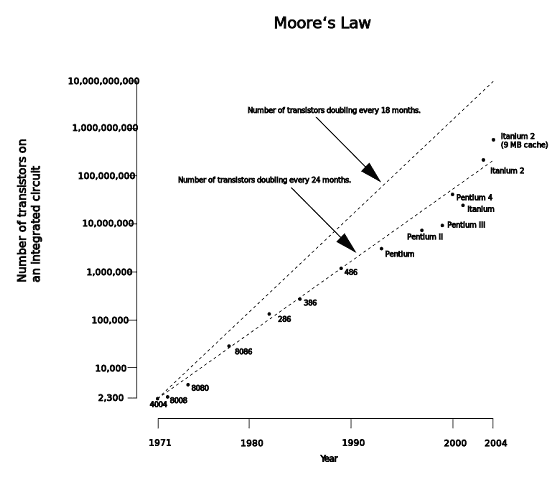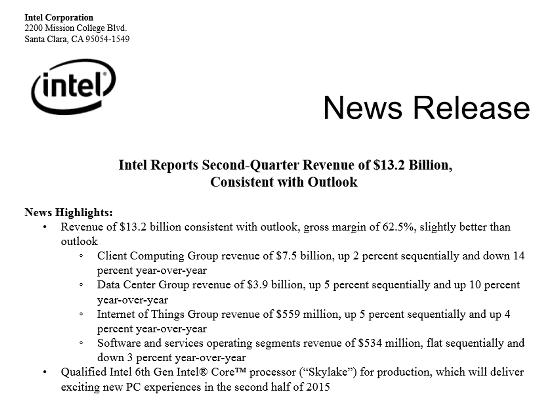Moore's law blinking yellow signal, Intel's 10 nm process transition delay definitely

Intel announced its financial results for the second quarter (April to June) on July 15, 2015. The settlement itself was better than the market forecast, but in the questionnaire for analysts conducted concurrently with the settlement report, 10 nmManufacturing process (process rule)We are clarifying that a major obstacle has occurred in the transition to.
Intel's (INTC) CEO Brian Krzanich on Q 2 2015 Results - Earnings Call Transcript | Seeking Alpha
http://seekingalpha.com/article/3329035-intels-intc-ceo-brian-krzanich-on-q2-2015-results-earnings-call-transcript
Wiring width when manufacturing semiconductor circuits such as CPU and memory on a wafer is called process rule and it is called "14 nm generation" or "22 nm generation" depending on minimum processing size. As the generation progresses and the minimum processing dimension becomes smaller, it becomes possible to arrange more transistors and wirings on the same area, so it is thought that further speeding up of the semiconductor can be realized, and the product of 14 nm generation (code name "Broadwell") Is the latest product of Intel.

Intel's CEO Brian Kruzanic said the transition to 10 nm, the next process rule, has been hindered at conference calls held for analysts, and the 10 nm process adopted product (code name "Cannonlake") was originally scheduled It is expected to be in the second half of 2017 that will be delayed more significantly.
From 2007 onwards, Intel will repeat "tic" which evolved process rules and "tack" which improved functions with new design every yearChick · TuckAccording to Kurzanicci CEO, the 14 nm generation circuit design is extremely difficult, and the release of a product (code name "Broadwell") which is a tick of the 14 nm generation will be delayed by about 1 year from the beginning in 2015 Although it was postponed to 10 nm generation products, there seems to be a delay due to manufacturing problems.
Intel founder Gordon Moore advocated in 1965 "The number of transistors on an integrated circuit doubles every 18 months" famous "Moore's law"Semiconductor integrated circuits have improved density by increasing density. In 1975, Mr. Moore slightly modified Moore's Law in anticipation of the next 10 years, presuming that "the number of transistors on the integrated circuit will be doubled every 24 months," as expected, semiconductor integration Density continued to improve.

Intel is the sixth generation Intel Core processor that corresponds to the 14 nm generation tack (code name "Skylake") Is in the manufacturing stage, it will be released in the second half of 2015. However, according to the delayed transition to the 10 nm generation which was revealed this time, Moore's Law is "when the number of transistors on an integrated circuit doubles every thirty months" at the time when it is necessary again Maybe it is.
Intel's second-quarter settlement of accounts for the second quarter of 2015 is better than market forecast, with sales of $ 13.2 billion (about 1.6 trillion yen) and earnings per share (EPS) of $ 0.55 (about 68 yen) After the announcement of financial results, the stock price of Intel is rising sharply.
(PDF file)Earnings Release Q2 2015 - Intel_Reports_Second-Quarter_Revenue_of_13.2 _ Billion_Consistent_with_Outlook.pdf

Related Posts:
in Hardware, Posted by darkhorse_log







